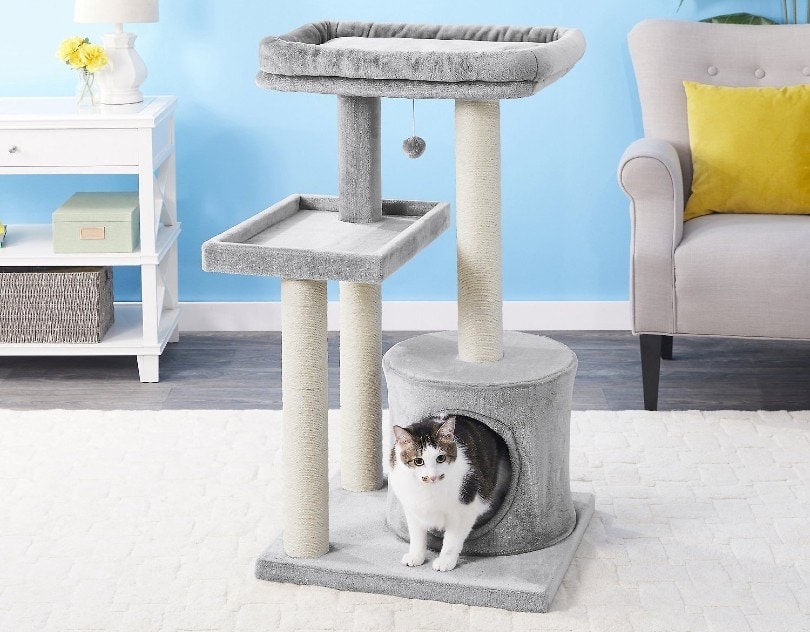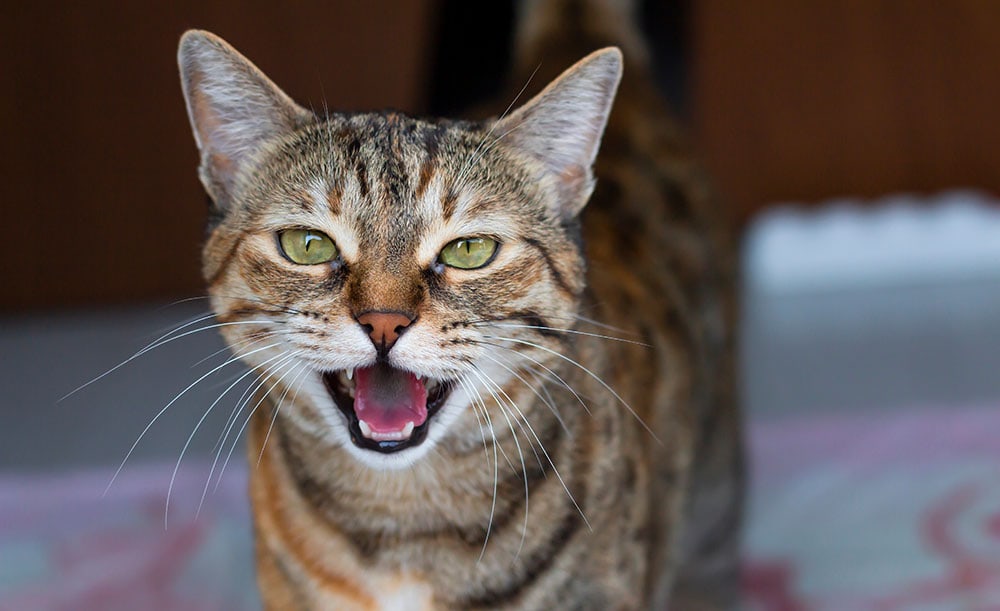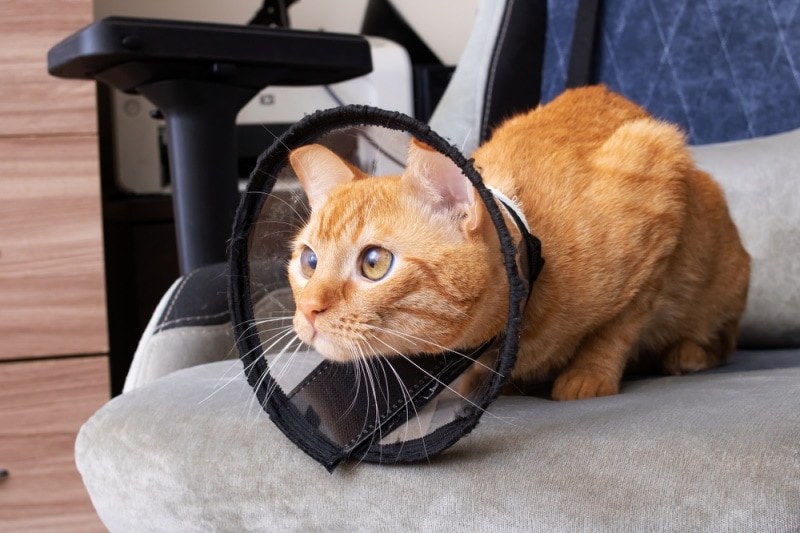Why Do Cats “Bunny Kick”? Understanding If They’re Playful or Aggressive

Updated on
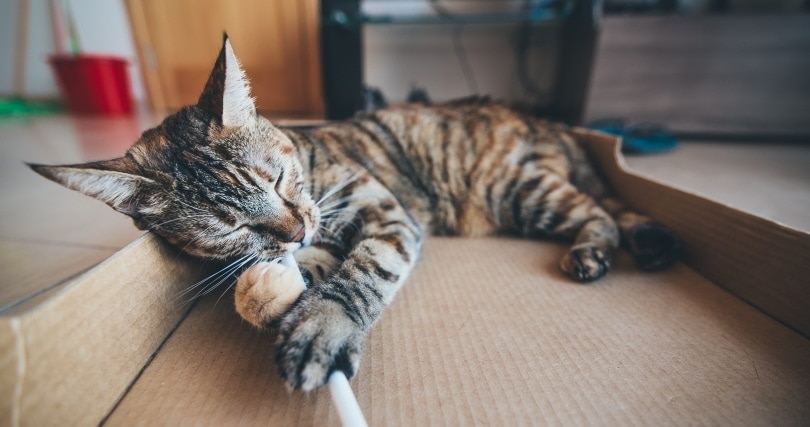
The list of things that cats do that make us wonder, laugh, or even become annoyed seems to be ever-growing. Even so, we are always trying to figure out why they do these things! If you have a cat, you’ve seen them do a bunny kick. This is when the cat is on their back or side while holding something with their front paws, usually a toy (sometimes your arm), and kicking it with both back feet together. What does this behavior mean?
Cats bunny kick with their hind legs to engage in predatory play or self-defense, simulating actions used while hunting or fighting in the wild. We have a few reasons that cats pull out this move!
 Why Is My Cat Playing This Way?
Why Is My Cat Playing This Way?
Kittens play, wrestle, and fight with their littermates. This is an early form of socialization for them. Learning this behavior early stays with them into their adult lives. If you live in a multi-cat household, you may have adult cats that still wrestle together, using the bunny kick without truly injuring each other. Or you may see your cats grabbing toys and bunny kicking them as they roll around. This is a normal way for cats to play, and it’s a natural behavior. This is something that is hardwired into them.
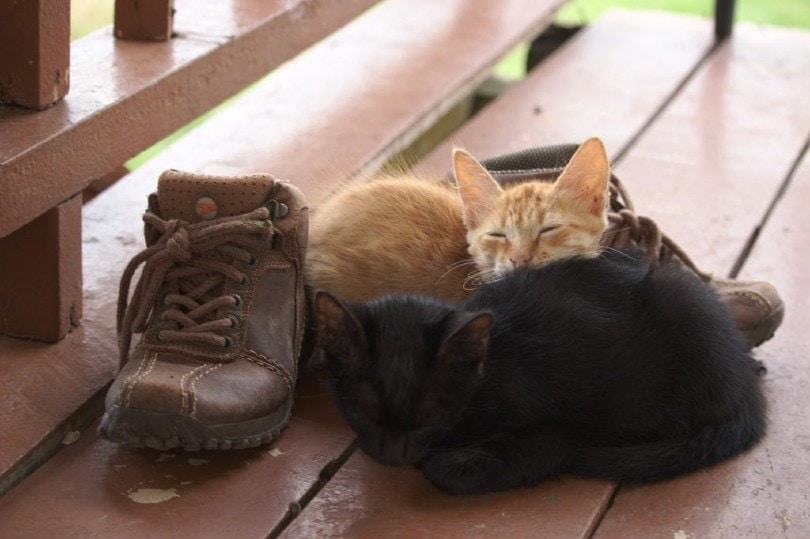
Bunny Kicking Is Instinctual
Cats are hunters. While domesticated cats don’t have to hunt for food, their ancestors did and wild cats still do. The bunny kick is a hunting tactic that cats use when they catch their prey. By kicking it repeatedly, they can make sure it doesn’t get away. When a cat is bunny kicking a toy, this is the same behavior that they would display if they had just caught a rodent.
Do All Cats Bunny Kick?
They sure do! The bunny kick is not limited to house cats. Cats in the wild do it, and you may even be able to see this behavior at a zoo if you catch the tigers or lions at playtime. In addition to this move being instinctual and a way that cats play, it’s also a protective act.
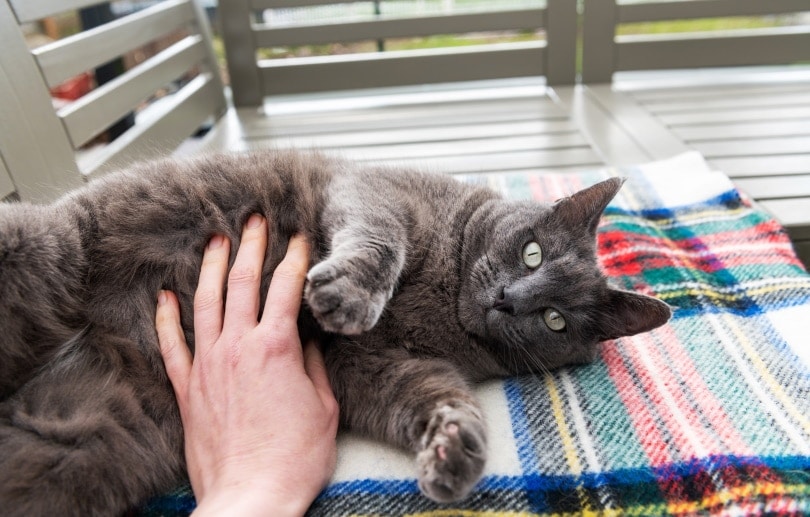
When Bunny Kicking Is Aggressive
Animals are at their weakest during an attack when their abdomens are exposed. This is a place on their bodies that must be protected. Leaving it vulnerable means they are at risk for a potentially fatal injury. By aggressively bunny kicking and injuring their attackers, cats can protect their vital organs.
The Switch From Play to Aggression
We know that cats can hunt, defend themselves, and play using the bunny kick. If you’ve experienced this move on your arm or leg, you know that cats can grab tightly and kick hard. Sometimes, this can start as playing and then suddenly turn aggressive. Other times, you could be innocently petting your cat and get a little too close to their belly and get the grab with the bunny kick.
When this happens, your cat is using this move as a way to defend themselves. The kick is done with aggression and can hurt! This is your cat telling you that they’d like you to stop what you’re doing. Even if they expose their belly to you, touching it can trigger their defensive instinct and get them to start kicking.
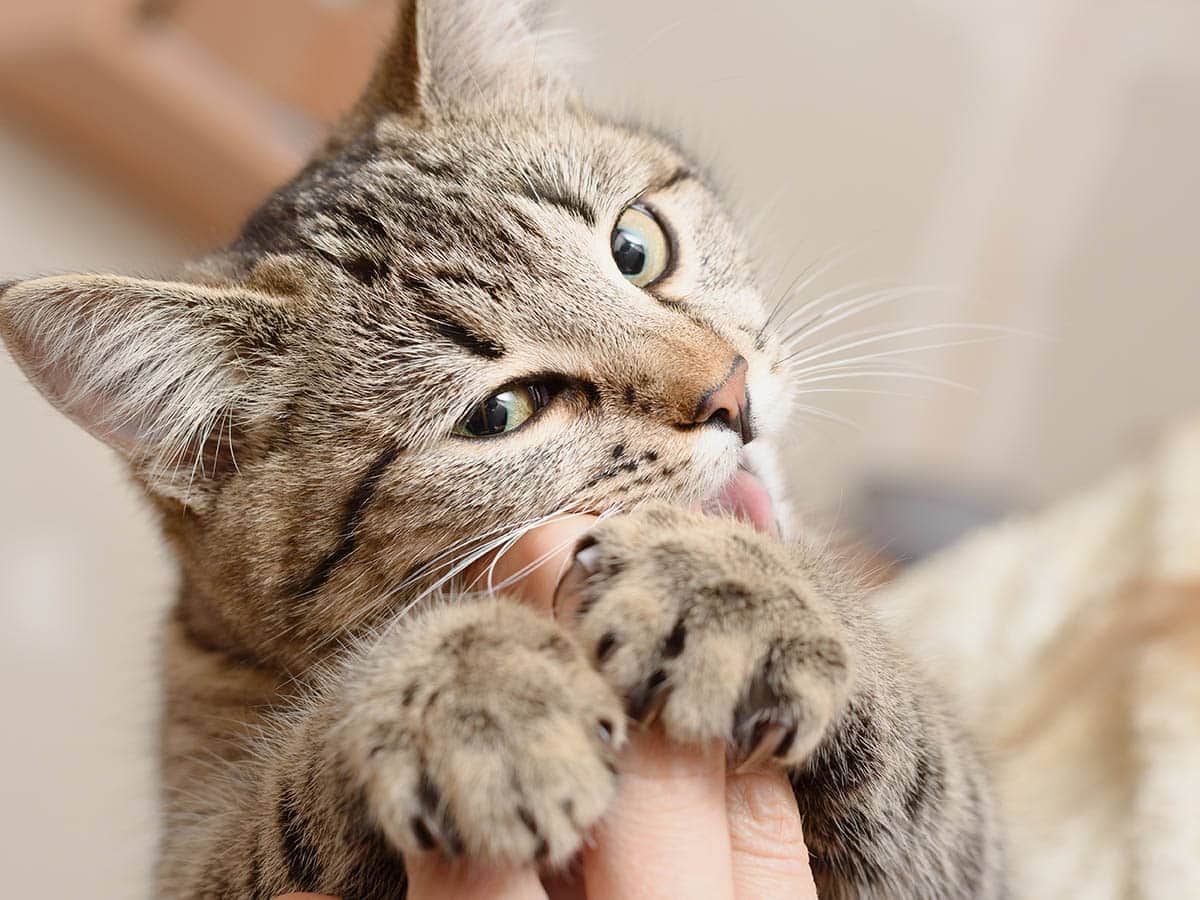
How to Tell if It’s Playful or Aggressive
When cats are playing, you can usually tell that they’re having a good time. Just as they wrestled and played with their littermates, they now want to play with you. The switch from playful to aggressive can come almost without warning. They go from playing to hard biting and kicking in a second. The best way to prepare for this is to pay attention to your cat’s body language. A cat with ears flat to their head, a wildly swishing tail, and dilated black pupils is feeling aggressive. When this happens, you can either disengage from playtime altogether or give your cat a toy to play with instead.
There are toys specifically designed to give your cat a way to safely kick something without hurting anyone. Discourage the aggression directed toward you before your cat becomes hostile. Playtime with you should be a positive experience for both you and your cat. Allowing your cat to bunny kick you, even if they don’t intend to hurt you, can still cause painful injuries. It’s best not to allow it to happen so your cat doesn’t associate your limbs with kickable toys.
Why Do Cats Expose Their Bellies?
You’ve probably had this happen to you: Your cat comes over by you and lies on their side, exposing their belly, as if they’re asking you to pet it. So, you reach over and start to give it a rub. Instantly, you’re bunny kicked! But why? Didn’t your cat just ask for this to be done?
It’s not common for cats to enjoy belly rubs, but some do! However, when cats show you their bellies, they may not be asking for a belly rub. Cats are protective of their abdomens. They use a bunny kick as a way to defend themselves against predators.
When your cat is showing you their belly, they aren’t feeling the need to protect it. They don’t expose their bellies in the wild when they’re feeling vulnerable. Your cat feels safe and secure around you and knows that they don’t have to defend themselves against you because you aren’t a threat. They’re just relaxing, but we take this as an invitation to pet their belly. This can trigger their defensive mode as they grab and bunny-kick your hand. They don’t mean to hurt you, and this doesn’t mean they don’t like you. It’s just instinct.
 Conclusion
Conclusion
When cats bunny-kick, it’s adorable, especially if they’re playing with each other or a toy. When it’s your hand that’s the target, though, it’s not so cute. If your cat is playing with you and they start to become aggressive, redirect them to a toy and disengage from the play. This instinctual behavior is done when cats are playing, hunting, or fighting. Knowing why your cat reacts in certain ways will help you keep playtime fun for both of you.
Featured Image Credit: Piqsels
 Why Is My Cat Playing This Way?
Why Is My Cat Playing This Way?
